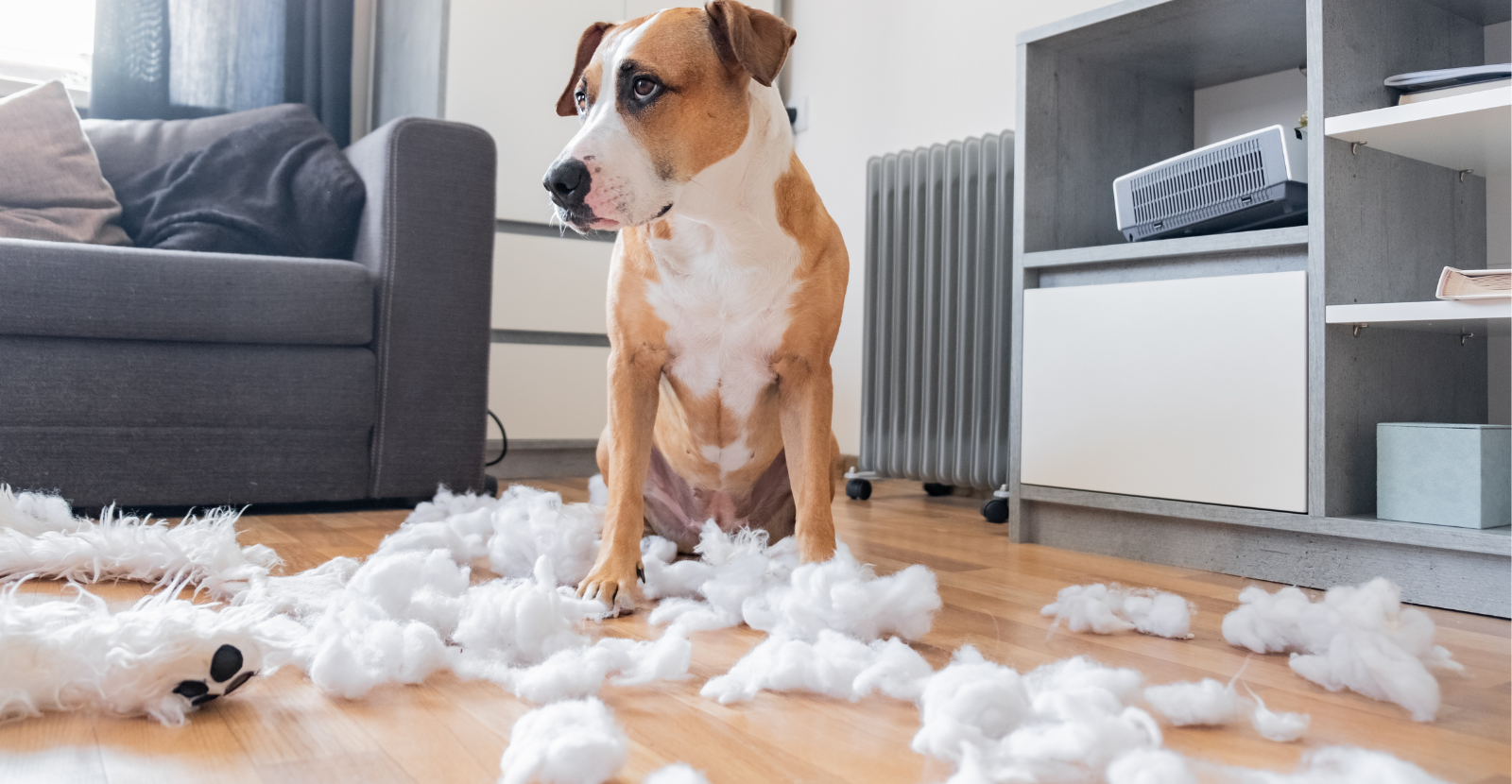Dogs crave love and attention from their owners. In fact, affection is a major part of the human-dog bond. This is the element that keeps your furry friend attached to you, making them feel loved and appreciated. It is also important for their overall well-being.
So, when you compromise that, it not only leads to emotional distance between you and your furry friend. It can also mean health issues for your furry friend. So much so, it can change their behavior and change their perception of you.
In this post, we’ll share eight signs that your dog isn’t getting enough love — so you can act before it’s too late. Let’s get started!

1. Chewing on Inappropriate Objects
Destructive chewing is often a symptom of boredom or anxiety, both of which can result from a lack of mental stimulation and affection. If your dog is chewing on furniture, shoes, or other inappropriate objects, it may be their way of expressing a need for more interaction and attention from you.
Chewing or chomping on things is often a clear sign that your dog may be looking for extra attention and stimulation. Dogs, being social animals, have a natural tendency to bond with their human companions. When they feel lonely, bored, or unmotivated, they may use chewing and breaking as a way to cope with their emotions or release excess energy. This behavior may also indicate a need for mental or physical exercise.
To solve this, give your dog more attention before you leave. Engage in playtime or take them for a walk before you leave to tire them out. Also, interactive toys can help redirect their instincts in a positive and healthier direction.
2. Bark More Than Usual
Barking is a dog’s natural form of communication, so you’ll hear it often. But to recognize ‘unusual’ barking patterns, you must know what qualifies as normal barking and what doesn’t.
Normal barking includes responses to stimuli such as doorbells, strangers, or other dogs, and is often brief and contextually appropriate. However, when your dog’s barking becomes incessant, disruptive, or out of character, it could be a sign that something is wrong.
Here are some signs to look out for:
- Frequency: An increased frequency of barking, especially in situations where your dog is normally quiet, may indicate a need for attention.
- Duration: Unusually prolonged barking, which is more than usual for your dog, can be a red flag.
- Context: Barking in non-stimulating situations or for no apparent reason may suggest a basic need for contact.
Excessive, prolonged, or unusual barking can indicate sadness, boredom, and anxiety. You can easily fix this with more interactions. Make sure your dog gets enough attention, participating in activities they were satisfied. This could include playtime, going for a walk, or simply sitting together.
Alternatively, you can train your dog to associate quiet behavior with positive rewards (for example, by giving them treats when they are quiet).
3. Unreasonable Weight Gain or Weight Loss
This is one of the most recognizable and most alarming signs of all – because it clearly says that the lack of affection is causing damage to your dog’s health.
Weight fluctuations are due to the signal of emotional distress. Keep a keep an eye on your dog’s weight and adjust their diet accordingly. Changes may indicate stress-related eating or loss of appetite, requiring attention to emotional needs.
Here’s how you deal with it:
- Arrange regular vet check-ups
- Even if you’re busy, don’t neglect balanced nutrition for your dog
Plus, when you suspect you’re going to be busy for a few days, arrange one dog keeper new. A dog sitter can’t really replace your presence and love for the dog — but it can prevent bad grief from building up for your dog. This will delay the worst consequences.
4. Following You Around
While dogs naturally enjoy proximity, constant shadowing may indicate a need for more attention. Check the context and offer additional interaction through play, walking, or simply being together. Make sure you maintain a balance between independence and quality time. This balanced approach will prevent loneliness and strengthen the bond between you and your furry companion.

5. Howling like a Wolf
Most dog breeds don’t howl much. They only growl when they want to communicate with other dogs or when they need to alert you about something. So, if your dog is howling more than usual, it may be a call for attention and companionship. Again, before you take any action, understand the situation well. Observe your dog’s surroundings and see if they have legitimate concerns.
If nothing should prompt the unusually high-pitched sound, take it as a sign and consider spending more time with your furry friend. Remember, responding to a dog’s pained growl immediately is always the best idea — let them know they can trust you.
6. Roll on Back
Usually, circling their back can be a sign of submission or an invitation to play. It can also indicate a desire for belly rubs and physical affection. If your dog often rolls onto his back in front of you, this is a clear sign that they are enjoying and looking for the tactile connection that comes with the belly.
7. Progressing Your Nose
Dogs often use their noses to explore and interact with the world, but nudging can also be a way for them to ask for attention and affection. If your dog nudges you with his nose, take it as an invitation to engage in physical contact and give him the attention he’s looking for.
This is a very subtle sign, so it indicates that they are the only ones beginning to feel neglected. Don’t let this feeling go with you!
8. Constantly Whispering
Howling is one of the most direct ways dogs express their emotional state. If your dog is constantly whining, it may be a plea for more attention and affection.
So, understand the context of whining, such as whether it occurs in specific situations or times of day. This will give you insights into your emotional needs of the dog.
Final Words
Finally, let’s highlight another important indicator that suggests insufficient love for your dog: the inability to remember your last gaming session with them!
If you’re having trouble remembering the last time you set aside time to play with your dog, that’s a big concern. Dogs thrive by interacting, playing, and sharing moments with their owners. A lack of consistent play can foster feelings of neglect and potentially contribute to behavioral challenges. Address this red flag immediately by reintroducing regular play sessions and making sure your dog’s emotional needs are met.

Thanks to our guest blogger, Arslan Hassan, who provided this great information!


